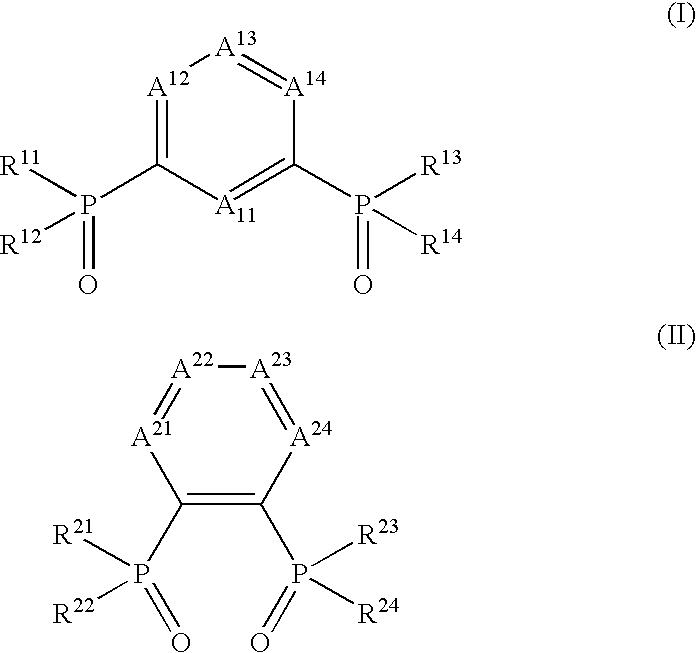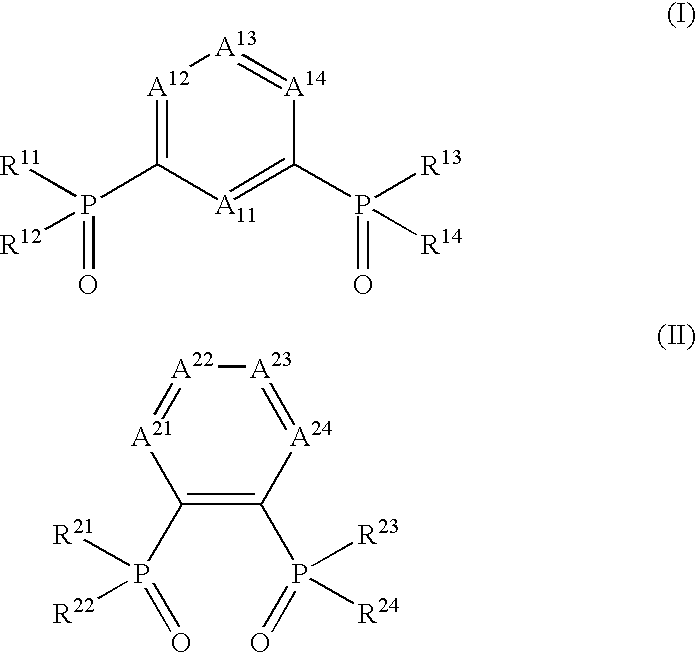Organic electroluminescent device
- Summary
- Abstract
- Description
- Claims
- Application Information
AI Technical Summary
Benefits of technology
Problems solved by technology
Method used
Image
Examples
examples
[0175]The invention will be described with reference to examples, but the invention should not be construed as being restricted thereto.
[0176]Exemplified compound 1 is synthesized according to the following scheme.
(Synthesis of Intermediate A)
[0177]n-Butyl lithium (a 1.6M hexane solution) (28 ml) was put into a three-neck flask having a capacity of 500 ml, and cooled to −72° C. with a dry ice / acetone bath. A THF solution (200 ml) containing 5.1 ml of m-dibromobenzene was added dropwise over 30 minutes. Subsequently, 7.5 ml of chlorodiphenylphosphine was added dropwise to the above mixture over 20 minutes, and after the mixture was stirred at −70° C. for 30 minutes, the cooling bath was taken off, followed by stirring at room temperature for 3.5 hours. Methanol (50 ml) was added to the reaction mixture. The solvent was removed under reduced pressure, liquid phase separation was performed with ethyl acetate and water, and an oily substance obtained by washing was separated by silica g...
PUM
| Property | Measurement | Unit |
|---|---|---|
| Molecular strain energy | aaaaa | aaaaa |
| Glass transition temperature | aaaaa | aaaaa |
| Energy level | aaaaa | aaaaa |
Abstract
Description
Claims
Application Information
 Login to View More
Login to View More - R&D
- Intellectual Property
- Life Sciences
- Materials
- Tech Scout
- Unparalleled Data Quality
- Higher Quality Content
- 60% Fewer Hallucinations
Browse by: Latest US Patents, China's latest patents, Technical Efficacy Thesaurus, Application Domain, Technology Topic, Popular Technical Reports.
© 2025 PatSnap. All rights reserved.Legal|Privacy policy|Modern Slavery Act Transparency Statement|Sitemap|About US| Contact US: help@patsnap.com



